How to create transparent and accountable teams
Last updated on: June 29, 2023
Transparency and accountability are key to effective teamwork.
Here’s how you establish and maintain them in your team in order to streamline your workflow and boost employee productivity:
Table of Contents
What is team accountability?
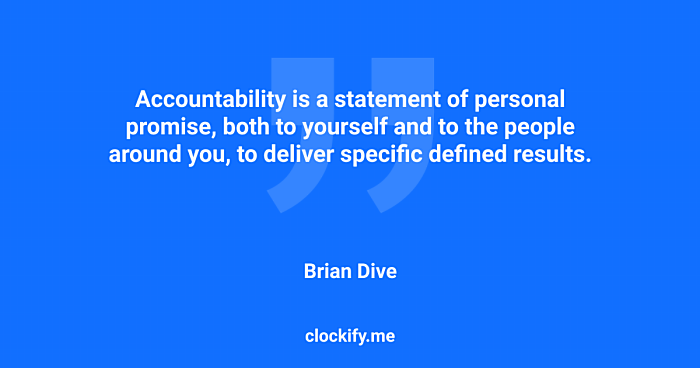
According to the team accountability definition, a team who is accountable is a team who answers or accounts for their decisions or actions when working on a task or project.
In gist, a team who is accountable is reliable with their work – they work on delivering the best possible services, but also take responsibility when something goes wrong on account of their actions.
In most part, such accountability involves the team being accountable towards their manager, supervisor, or general superior. But, it also involves mutual accountability in teams – team members being accountable towards each other, as well as holding each other accountable for their respective tasks.
Your accountability levels determine the strength and potential of your team, and, in extension, your company:
- Weakest teams and companies – have no accountability, and are likely to fail during their first year
- Average teams and companies – have the boss or supervisor hold all accountability, so only one person (the boss) takes most of the heavy lifting, and micromanages everything
- Superb teams and companies – have high team accountability, with peers holding each other accountable, to the point that the supervisors and bosses serve only to provide light guidance and receive progress reports
Benefits of team accountability
There are several benefits to efficient team accountability:
Accountability helps teams perform better
According to the Hawthorne effect, people who know they are being supervised and held accountable for their actions tend to work harder and give better results.
Just think about the popularity of gyms and fitness centers – instead of exercising at home, some people subconsciously choose to go to the gym to exercise in front of other people, because other people’s presence is what pushes them to go through with the exercises, and even improve their routine.
In a business setting, there are also plenty of elements that can help hold you accountable as well as encourage you to focus on your work in order to perform your best:
- a supervisor monitoring your actions
- a manager/boss you have to report to
- your peers trying their best with their own tasks
Knowing you are accountable for a task works the same as having someone monitor you, in one setting or another – you know you have to work on a task, you know you’re responsible for it, you know your performance will be assessed sooner or later, and this fact serves as a trigger to the Hawthorne effect.
Accountability encourages you to beat the deadline
On a related note, when you know others are aware that you’re responsible to follow through with the project deadlines and deliverables, you’ll aim to finish everything with high quality, and before the set deadline – in order to justify everyone’s trust in your time management, and other abilities.
Accountability helps you sort out priorities
Before starting work on a task, an accountable team will ask whether and why the said task is important for their overall goal.
Once they analyze the situation, the team will put the task in the backlog if it isn’t urgent, or eliminate it if it isn’t important, to leave room for priority tasks.
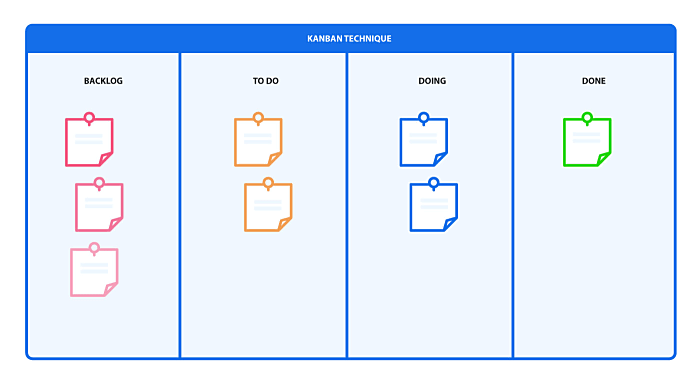
Accountability helps you avoid team animosity
At some point, all teams come to a disagreement – accountability stops these disagreements from evolving into unproductive discussions and conflicts, by helping you develop trust and respect among peers.
Conflicts can lead to some bad blood in your team, but not if you’ve already established the ground rules for what you want to accomplish with a project or task. So, when you say that something went wrong, it isn’t viewed as a personal attack, but an impersonal observation that asks the team to fix the problem in accordance with the project expectations.
Accountability encourages honest feedback
When a team is accountable for their work, they’ll constantly revise their decisions and challenge what they’ve done so far – and, considering that they’ll aim to get the best possible results out of each action, they’ll also give out honest feedback for every contribution to the project.
Accountability helps progress
Dreaming about a fantastic end result for your project is a nice motivator, but may take away too much of the time you should really be working.
However, you know you can’t waste too much time dreaming when you have to hold each other accountable throughout the project – when work comes to a halt, sooner or later, someone will remind the team it’s high time to continue.
What is team transparency?
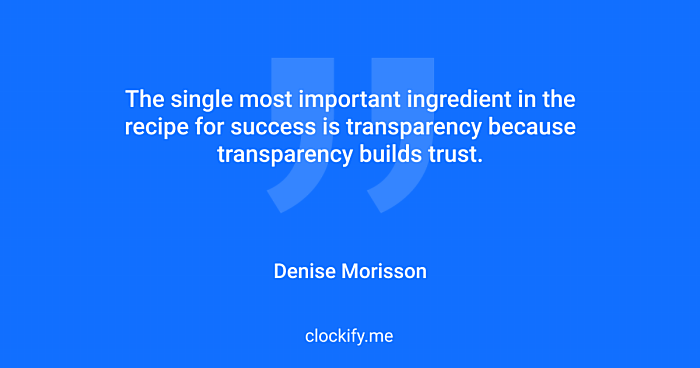
According to the team transparency definition, a team who is transparent is a team who communicates openly and honestly about their work and progress – in gist, a transparent team has information, materials, and other resources flow freely between the team members.
When you know what everyone else is working on, and thus, know that everyone is equally contributing to the project and making sure it shines in the end, you understand that you’re all on the same side – this builds trust within your team and strengthens teamwork on a whole.
Benefits of team transparency
There are several benefits to efficient team transparency:
Transparency makes teams happier
According to research, transparency is the No. 1 factor that makes employees happy in their workplace – this makes sense, considering that transparency helps build trust and a sense that you can rely on your colleagues, as well as the company’s system.
Transparency helps you delegate
Team transparency explains who is accountable for what – and, the person who is accountable for a task is likely the one most skilled for the job, to begin with. So, team transparency makes it easier to delegate tasks and ask the right person in your team for help.
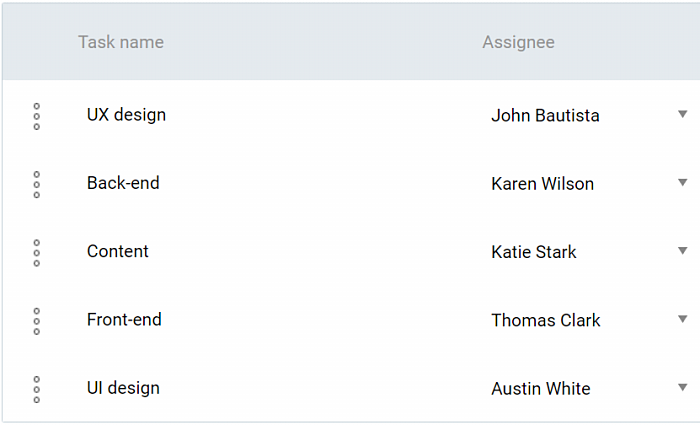
Transparency helps you avoid surprises
In non-transparent teams, people are less likely to share their concerns and mistakes, because they’d feel like they’re the only ones who have these kinds of problems.
So, they keep quiet, and sooner or later their concerns become reality and their neglected mistakes put a halt to the project progress – all because they didn’t feel safe enough to share.
But, in a transparent team, problems, concerns, and potential mistakes in a project are discussed on a regular basis – people feel free to discuss their concerns because everyone else is sharing as well.
Transparency helps you get great ideas
An official title at the office shouldn’t serve as a restraint to creative ideas from unusual places.
Perhaps your back-end developer has some great ideas for the most recent design solution you’ve been struggling to pull off.
Or, perhaps you’ll find that your experienced designer has some great insights about the code in your newest app.
In gist, when everyone in the team is familiar with all the project details, it gets easier to collect great, unexpected ideas when you fall into a creative slump.
How to create transparent and accountable teams
Now that you’ve understood the benefits of transparency and accountability, it’s time you start working on creating transparent and accountable teams – here are some effective pointers meant to help you:
Discuss and explain accountability and transparency
For some employees, the idea of accountability and transparency may sound like a road to anxiety and stress – so, it’s up to the leader of the team (or the company manager) to explain the benefits of the two practices.
But, it’s also their job to explain how the team can make sure accountability and transparency are implemented for the benefit of everyone.
The best thing to do before each project is to make sure the team discusses how they will hold each other accountable this time – everyone in the team can put forward ideas, and devise a plan. This way, the team will feel at ease with being accountable and transparent, because they’ll be the ones setting and tweaking the rules.
Hire the right people (and be the right kind of supervisor)
Both accountability and transparency depend on your hired staff – responsible, hard-working people are more likely to accept accountability for their work, and responsible, hard-working people are more likely to value a transparent approach in your company, or even enhance its effects.
Luckily, about 87% of professionals prefer working in transparent companies, so, by nurturing such an approach, you’ll actually be able to attract top-notch talent.
Once you hire a great team, make sure you make a great supervisor – offer help and guidance when needed, but don’t try to micromanage everything and everyone.
Instruct your team to track time
The practice of time tracking has many benefits and the data you get from a transparent time tracking tool helps you document project activities – you’ll maintain both accountability and transparency by keeping the data on who worked on what, and for how long.

For ultimate transparency and accountability, it’s best that you keep a public team Dashboard showing what everyone is working on at any time, for everyone to see.
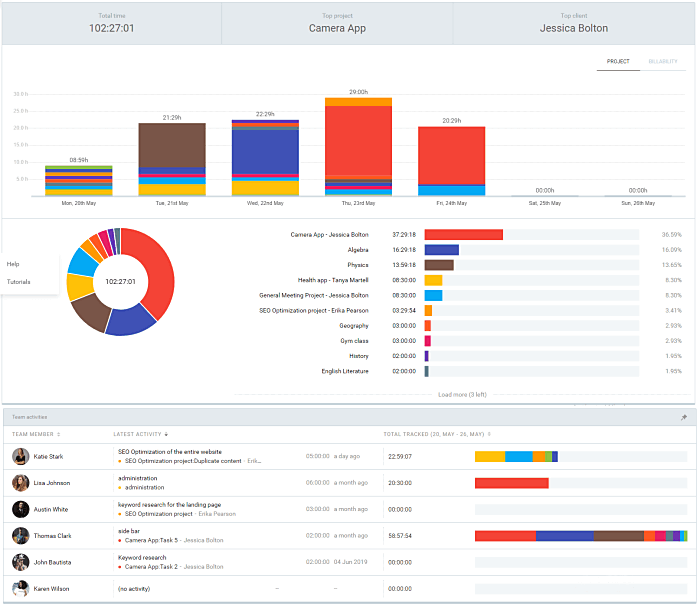
With time tracking data, you’ll also be able to:
- identify time-wasting activities
- distinguish between procrastinators and high-achievers
- analyze the amount of time you can save and allocate to different, more important activities
- view the total time spent on a project, but also on separate tasks
Create an accountability chart
The accountability chart is a technique based on structuring work around functions in a chain:
- first, identify assignments for each function
- order assignments by priority and urgency
- delegate these assignments across teams – all teams will be responsible solely for their delegated assignments
- if an issue comes up with an assignment, instruct the responsible team to work on it
- once the task is finished, the second team in the chain takes over and starts working on their own assigned task
- this continues until all the assignments within a project are finished
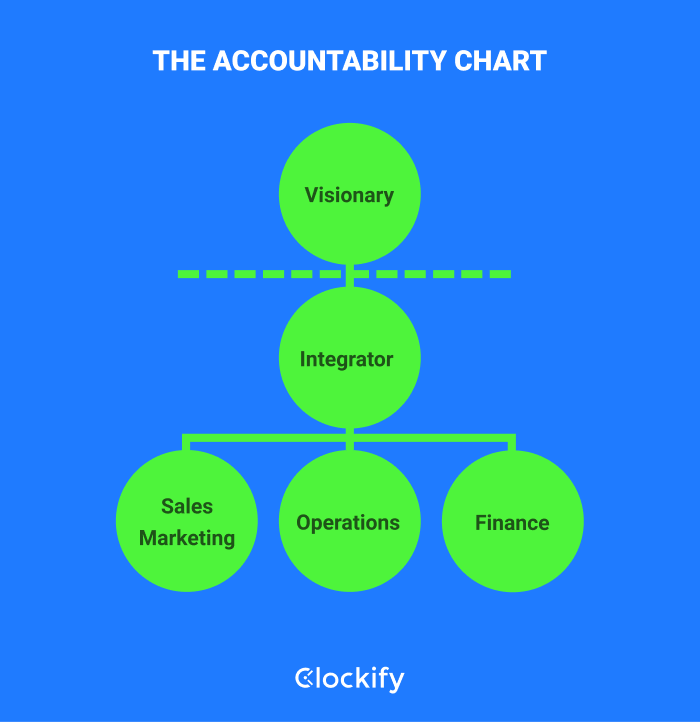
By creating an accountability chart you’ll compartmentalize the project and make responsibilities clear. You’ll also be able to track the progress of a project – as each new department takes on the project to do their part, the project progresses.
You can also clarify who’s in charge of what part of the project within the team – if you want to make the most out of each task, always choose the most competent person or team to handle the task.
This way, you’ll receive quality end results, and make sure the delegatee is perfectly content with being accountable for this task.
Once you’ve made the accountability chart, teams and team members will be able to decide whether they accept the obligation or whether their share of the work doesn’t fit their chart – so they’ll delegate to more suitable people.
Define project expectations
Telling people what to do once you assemble a team is the first step to transparency and accountability – but letting the team know what you expect from the end results makes them aware of what they’re accountable for.
Make sure everyone knows the project expectations:
- What is the project budget?
- What are the project deliverables?
- What are the project milestones? What do the project milestones involve?
- What is the project deadline?
Once the team has understood all project expectations they’ll find it much easier to stick to the planned project goals, and much easier to understand when something goes wrong.
Provide performance feedback
Providing your team with a timely evaluation of their work performance is exactly what performance feedback is all about.
However, before diving deeper into the assessment, start by asking yourself the following questions:
How often does the team need to provide updates on project progress? In what format should the updates be?
A great solution is to ask for timesheets showing what the team worked on every week, every other week, or at the end of the month.
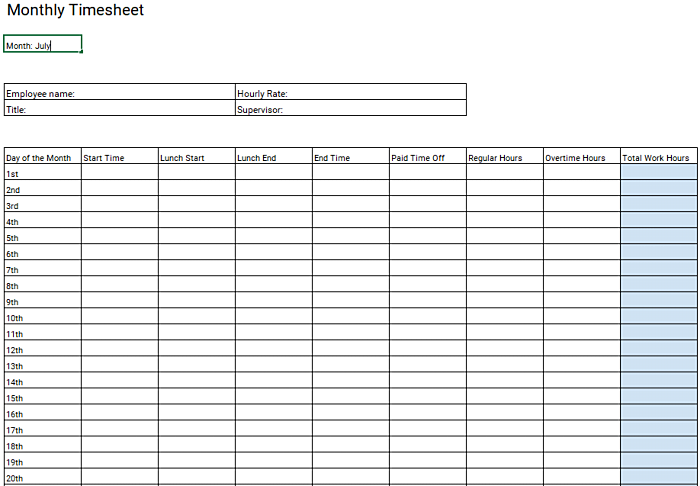
You can also ask for Reports showing how everyone spent their time at work, or have the team report via chat in a communication tool – this way, you’ll have written documentation for who worked on what, and when.
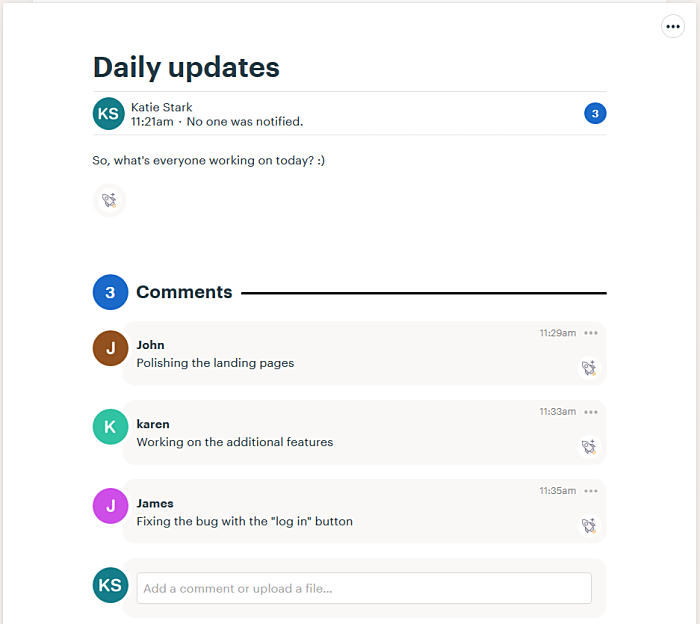
In order to add the “for how long” dimension to your reports, you can use your team’s time tracking results as the basis of your performance review.
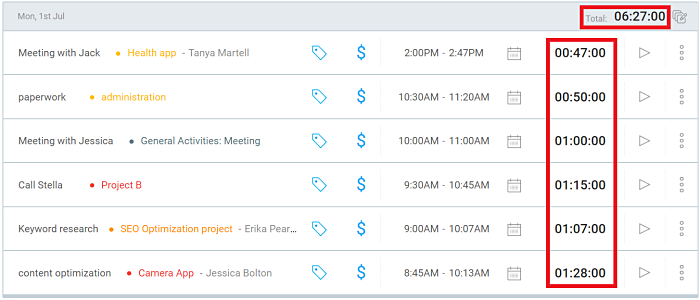
When it’s time to provide feedback for their work, be specific – instead of telling someone that they need to improve their work, be clear on what they need to improve in their work. You’ll help the person in question avoid a lot of confusion and time spent figuring out what you meant by your “you need to improve” remark.
On a related note, don’t shy away from constructive criticism – start off by saying what your team did well, and highlight the strengths they showed on an assignment. Then, point out the aspects of the project that still need some work – name your concerns and ask for suggestions for how to solve the problem. If needed, provide some of your own suggestions.
Maintain an effective communication loop
Holding someone accountable for a task and then asking them for a report may seem like you’re trying to call out the team member for mistakes in his/her work – but, it can prove an effective way to harbor communication and keep information transparent.
To have effective communication, make sure you:
Maintain the right tone – if there is a problem with the project, try to maintain an understanding tone while discussing what went wrong, and not an accusatory tone.
Ask questions – if you’re unsure about what happened, it’s best that you ask questions about the problem, rather than point fingers and look for the “guilty” party.
So, instead of outright saying: “You forgot to send the report to the client”, ask your team: “Did the report of the client get sent yesterday?”
This way, the person who was responsible for sending the report can answer the question rather than just be assigned the blame – you may even find out that this teammate had problems that halted sending the report, but nevertheless managed to get a 3-day deadline extension from the client.
By asking such questions and maintaining the right tone, you’re not making accountability and transparency about accusations and a need to defend oneself – you make them about maintaining a flow of important information.
Maintain honesty
An honest team won’t have a problem with being transparent and accountable – open communication helps build trust, trust encourages innovations, and before you know it, you’ll have a healthy and effective work culture, one that values a creative input.
If everyone is honest with their work, you’ll know where the project stands at any point – on the other hand, if you keep important information to yourself, you hinder productivity and may even cause bigger issues along the way.
In order to encourage honesty, you can hold daily standup meetings – everyone will be able to share their progress, problems, and concerns to the team, hear what other people have been up to, and enjoy a new surge of project-related information each morning or afternoon.
Share project results
The best way to ensure your team feel the benefit of transparency and accountability is to make the end results public – after all, if a group of peers worked together on a project for several difficult months, they’ll want to know how it all worked out in the end.
So, the team should share the positives of their end results, but also the negatives – a team who is honest about their failures is more likely to learn from these experiences and work together to overcome similar difficulties in the future.
Have the team sit together
Having the team sit together helps them witness and better understand everyone’s work life – this builds an appreciation for other people’s work.
You’ll be able to understand when your colleagues are having a stressful day, whether they interrupt each other frequently, and what kind of activities occupy them for most of the day. When the team is sitting together, it gets easier for them to hold spontaneous brainstorming sessions and solve problems faster.
To achieve this, you can have the team share an open space, or have them spend some more time in the conference room together – having the right people physically at the same place will help improve the flow of information.
Make your schedules public
Sharing the team’s calendar is one of the best practices that lead to better transparency – each team member can share his or her calendar publically, so you’ll all have an insight into other people’s schedules. For this purpose, you can use Google Calendar, or any other calendar with privacy and sharing options.
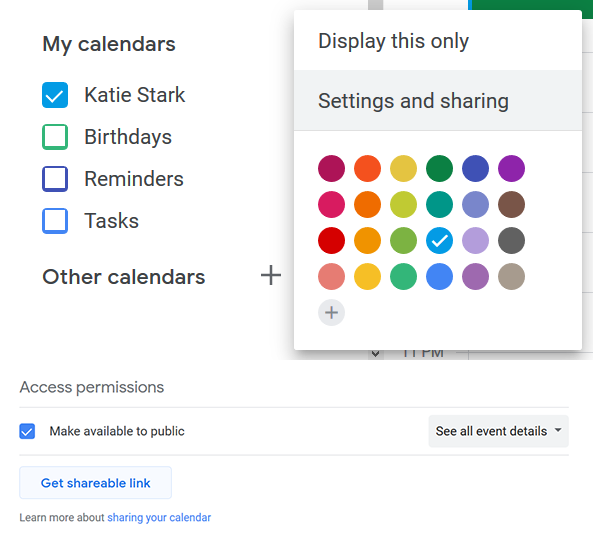
This way, you’ll have a better understanding of what your colleagues are experiencing on a daily basis – you’ll know when someone is facing a hectic day or is preparing for an important meeting.
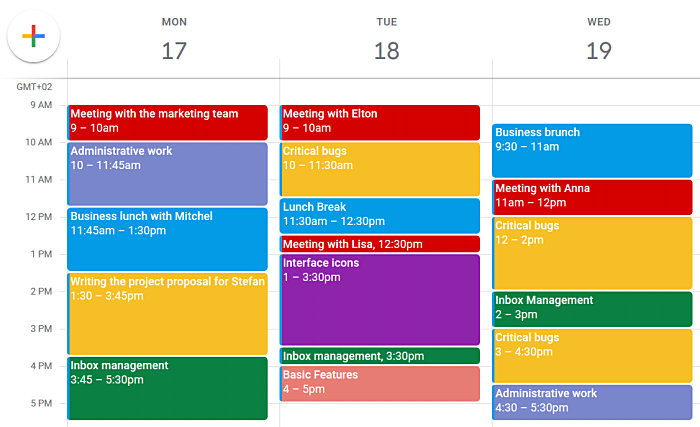
Sharing all calendars not only increases empathy and a sense of togetherness within a team, but it also helps you plan your tasks so that they’re in sync with other people’s schedules.
Do you have to plan a daily meeting with the production team, but don’t want the meeting to overlap with other people’s agenda for the day? Just check the calendars.
💡Clockify pro tip
You can easily track time on Google Calendar with the Clockify-Google Calendar integration.
Socialize
In the end, accountability and transparency shouldn’t be synonyms for “a strict work setting” – you should also make an effort to socialize with your colleagues outside of the work frame.
So, organize a team brunch, throw a pizza party, and talk about non-work subjects from time to time – ask people what they’re doing for the weekend, share some funny college stories, and talk about your plans for the summer. Such efforts to socialize help team members get to know each other better, so they feel more comfortable to share ideas and concerns and own up to their own mistakes.





